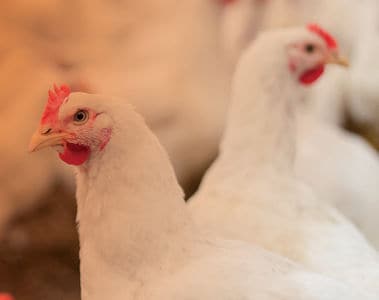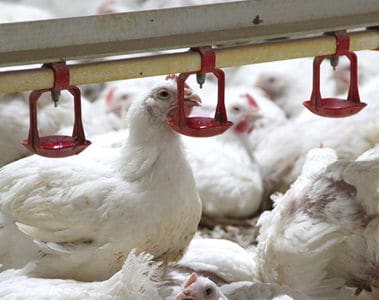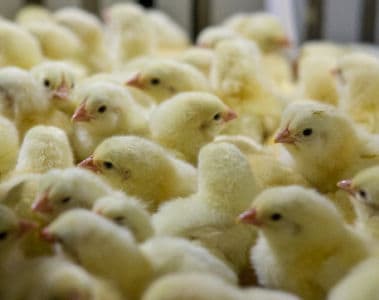Avian metapneumovirus (AMPV) is a highly contagious upper respiratory disease affecting global poultry, known variably as avian rhinotracheitis, turkey rhinotracheitis, or swollen head syndrome based on subtype and host species. AMPV first surfaced in South African turkeys in the late 1970s as subtype A and has since expanded to include subtypes A, B, C, and D (MacLachlan, James, and Dubovi, 2017). Subtype C initially appeared in US turkeys in the late 1990s, with subsequent decreased outbreaks post-2007 due to improved biosecurity and vaccination measures (Yu, 2012).
The US is currently facing a new AMPV outbreak involving subtypes A and B, affecting commercial farms in 9 states: North Carolina, South Carolina, Virginia, West Virginia, Pennsylvania, Michigan, Georgia, California, and Texas, impacting turkeys, broilers, broiler breeders, and table egg layers.
AMPV primarily targets the upper respiratory tract, exhibiting clinical signs like conjunctivitis, nasal exudate, and periorbital swelling (Amine et al., 2023). Secondary infections, such as E. coli, may arise due to immunosuppression and respiratory system damage. Chickens typically display initial signs of sneezing, rales, and excessive tear production, while turkeys often exhibit edema around the eyes and nasal discharge. Reduced egg production, poor eggshell quality, and egg yolk peritonitis are also observed in turkey hens and broiler breeders. Morbidity can reach 100%, with mortality varying from 0.4% to 50% depending on co-infections (Rautenschlein, 2020).
Distinguishing AMPV from other respiratory diseases like Avian Influenza, Infectious Coryza, or M. gallisepticum based solely on clinical signs is challenging, so diagnostic testing is crucial in proper identification. Serologic and antigen tests are available across US labs, with sample collection recommended three to five days post-infection to enhance virus detection and isolation (Amine et al., 2023).
While no specific treatment exists for AMPV, managing secondary infections can be beneficial. Currently, no commercial AMPV vaccines are licensed in the US. Implementing robust biosecurity measures, effective management practices, and regular testing protocols are pivotal in curbing virus spread.
Citations
- Amine Mernizi, Hicham Fathi, Juan Luis Criado, Mohammed Bouslikhane, Abdeljelil Ghram, Mohammed Mouahid & Saadia Nassik. 2023. Avian Metapneumovirus Review: A Focus on Broilers. Poult. Sci. J. 11(1): 1-17.
- Yu, Q. 2012. Avian metapneumovirus in the USA. Review Article. 2012 CDROM.
- MacLachlan, N. James, and Edward J. Dubovi (Editors). "Chapter 17 - Paramyxoviridae and Pneumoviridae." Fenner's Veterinary Virology, 5th edition, Academic Press, 2017, pp. 327-356. ISBN 9780128009468.
- Rautenschlein S. Avian metapneumovirus. In: Swayne D.E., editor. Diseases of Poultry, 14th ed. Wiley Blackwell; Hoboken, NJ, USA: 2020. pp. 135–143.


